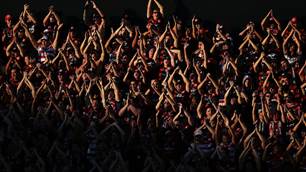For the third time in history, the A-League grand final was contested by Sydney FC and Melbourne Victory.
Graham Arnold’s record-breaking Sky Blues were clear favourites, but were taken all the way to penalties by a staunch and fiercely determined Victory.
With the scores locked 1-1, the visitors eventually went down after a Carl Valeri miss and a Danny Vukovic save from Marco Rojas during the shoot-out.
In a final fraught by fouls, both teams struggled to create chances and weren’t allowed the time or space to maintain possession of the ball.
Formations
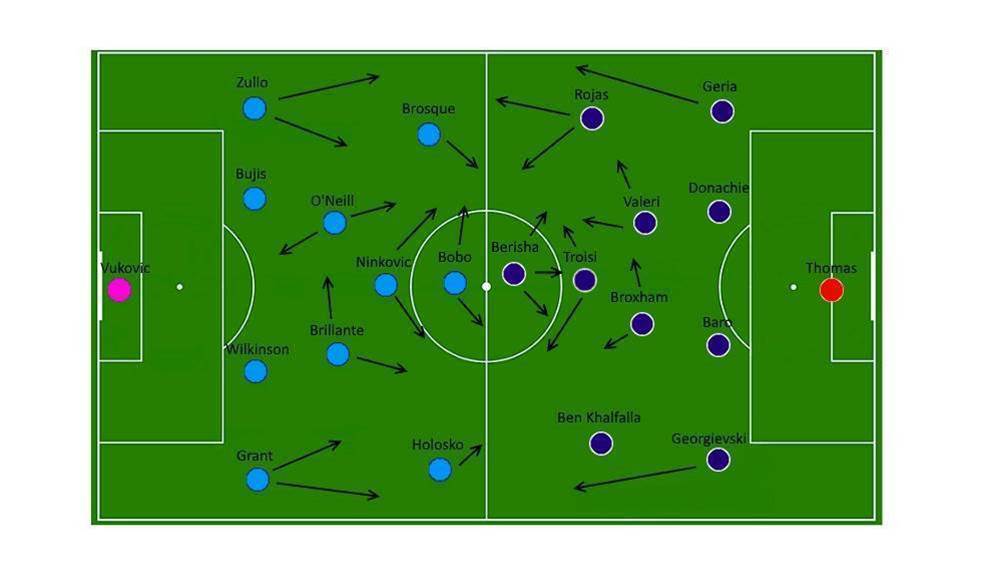
As was expected, both teams lined up in a 4-2-1 formation, employing two holding midfielders each – Brandon O’Neill and Josh Brillante for Sydney, and Leigh Broxham and Carl Valeri for Melbourne Victory. Their roles – to protect the back four of their respective sides as well as offer key passing lines during the construction phase of possession.
Sydney FC lined up with the starting XI which has brought them so much success this season, with the only major change to the match day squad being the omission of Bernie Ibini from the bench due to an injury sustained in the week leading up. Victory’s starting team contained 8 players who have appeared in a previous A-League final for the club, including 20-goal striker Besart Berisha – a winner of three prior finals, scoring in all.
Sydney FC: problems playing out during construction phase
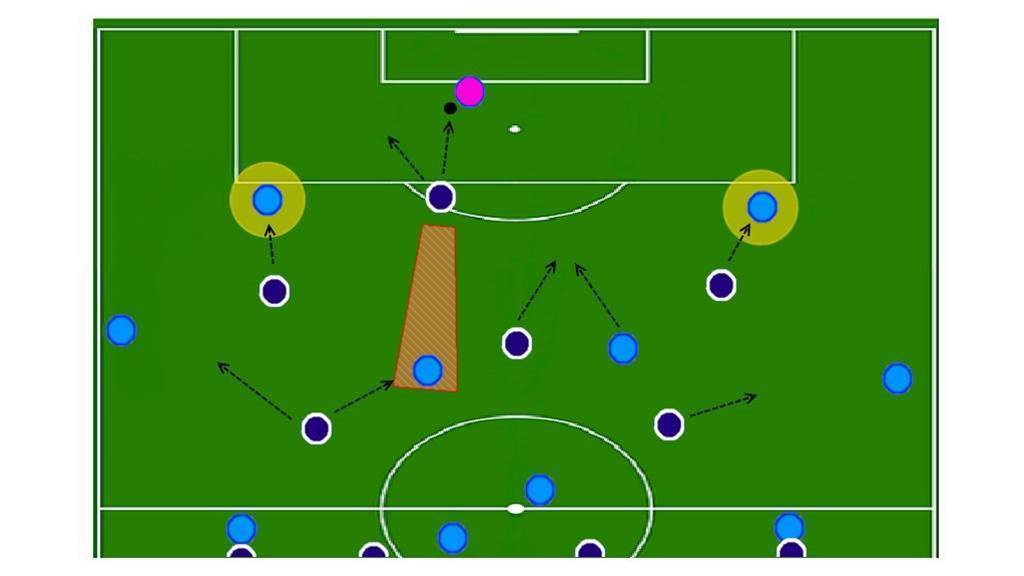
In the first half, Melbourne Victory enjoyed an early spell of dominance assisted by Sydney’s inability to effectively play out from the back due to the high press employed by Kevin Muscat’s team.
In what was a mostly man-oriented system, Berisha consistently applied pressure to Vukovic, approaching on an angle in order to dictate the angle of his release. As this press on the ball carrier was taking place, the Victory wingers pushed onto the centre-backs who had positioned themselves to receive the ball at the top of the penalty area, effectively marking them out of the game.
Either Brillante or O’Neill would drop off into the vertical space in front of Vukovic to receive the ball and would be promptly followed by James Troisi – again, effectively being marked out of the game. Valeri and Broxham subsequently positioned themselves between the remaining Sydney midfielder and their respective fullback. Importantly, they were close enough to apply immediate pressure should the ball be received by Rhyan Grant or Michael Zullo. When combined with the cover shadow of Berisha cutting out the passing line to the higher of the two holding midfielders, this defensive strategy often led to the playing of more direct football by Sydney FC.
The use of Marco Rojas to exploit Sydney’s left
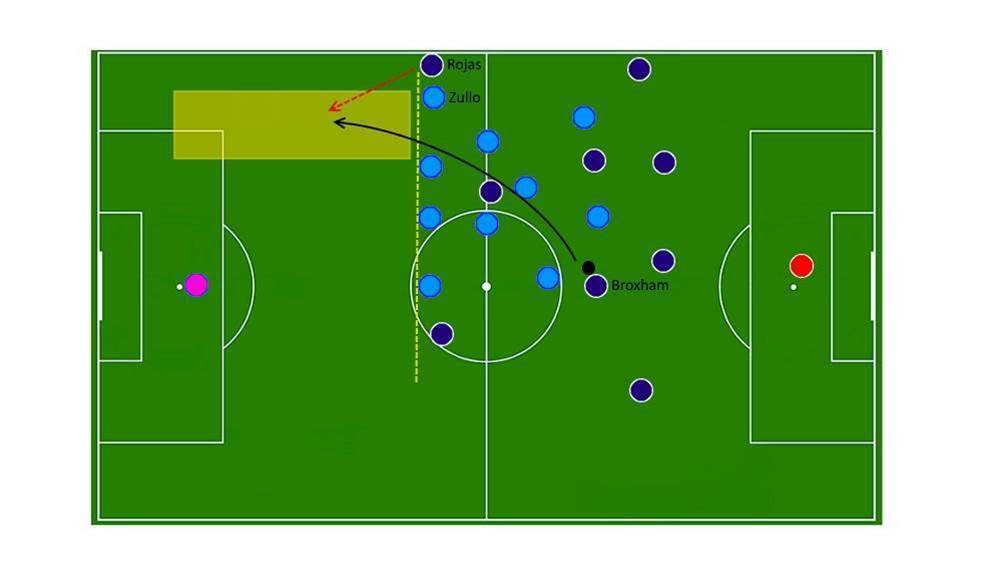
During Melbourne's dominant spell they routinely employed direct balls to the half-space behind Sydney left-back, Zullo, in order to use the pace and skill of Marco Rojas. The use of such passing is not simply a ‘kick and chase’ strategy as more direct football is wrongly called, but a clearly defined tactic to exploit a weakness in the opposition.
Defensively, Sydney FC have set record after record this season. However, it has been seen that a weakness in the chain exists behind the adventurous Zullo, who often appears further up the pitch in advanced attacking positions. Due to this attacking mentality, Zullo is prone to leaving space exposed behind him as he looks to counter as quickly as possible.
Rojas was consistently positioned outside and equal with the last man, and was often played in behind by pinpoint passes from Broxham or Valeri, forcing Zullo to turn around and chase – it is at this moment where the advantage is gained, and when combined with the sheer pace of the Kiwi can, as has been shown often this season, turn into a serious goal-scoring opportunity.
Sydney FC head coach Graham Arnold was rightfully concerned with the potential cost of repeating this tactical situation repeatedly, and instructed Zullo to constantly ensure a one metre cover between himself and Rojas, which resulted in the nullification of this strategy in the second half and contributed to a poor performance from the Victory star.
Sydney’s pressing from the front
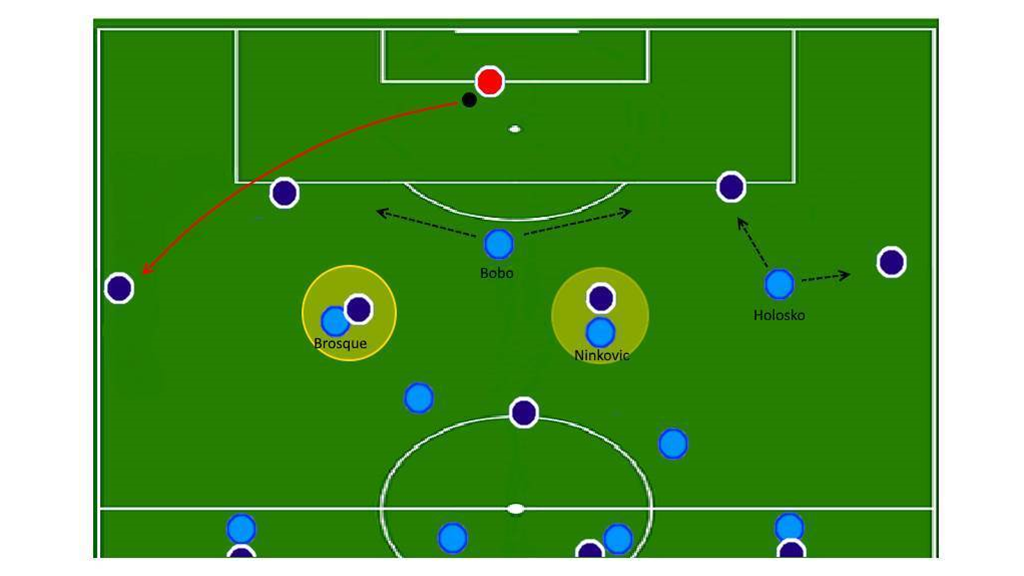
In a similar fashion to Victory, Sydney also employed a man-oriented press, but with the primary goal of dictating the direction of play as opposed to forcing a long ball. From this point, Sydney were able to structure their defensive block around the predicted circulation of the ball.
In the example above, Sydney are attempting to encourage a pass from keeper Lawrence Thomas to right-back Jason Geria, and were able to do so successfully due to a range of defensive movements.
First, Bobo prevented the ball being played to either centre-back by positioning himself in an area where he was able to apply constant pressure if James Donachie or Alan Baro received the ball.
Second, Milos Ninkovic man-marked one of the holding midfielders, while the other was picked up by Alex Brosque, who had come inside leaving space on Sydney’s left.
Finally, Filip Holosko blocked off the right-hand side by being 50-50 against Baro and Daniel Georgievski, forcing Lawrence to either play to Geria or toward the final third.
Zullo and Grant stretching the Victory block
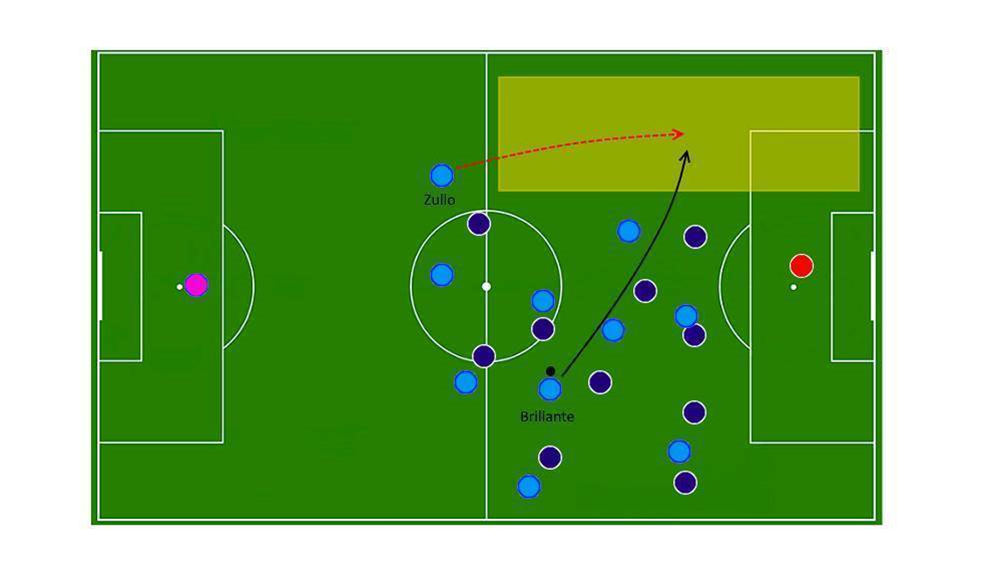
Throughout the match, but particularly in the second half, Sydney FC were able to successfully apply the overload principle.
In all invasion-based games, the overload principle is an effective tactic which prescribes that the opposition is purposely shifted across to one side, leaving the opposite side of the playing area open.In this case, sustained possession on Sydney’s right dragged the Melbourne defensive block across, which left Zullo with plenty of space to run into and exploit, often fed by man-of-the-match contender Josh Brillante. Zullo was able to make these runs late, and was usually triggered by the coming inside of left-winger Brosque, who was then followed by Geria.
This movement was used to great effect in a great volume, being replicated by Grant on the right, and proved to be the primary path to goal. If it weren’t for a mistimed kick by substitute David Carney, it is highly likely that Sydney would have won in regulation time with Grant getting the assist from this very method.

Conclusion
A tense final was decided by penalties after long periods of midfield battles, punctuated by a number of fouls from both teams. A closely fought encounter was deservedly won by Sydney, although neither team were able to create high amounts of goal-scoring opportunities over the 120 minutes.
Related Articles
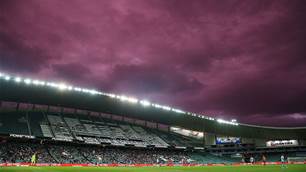
Robertson still committed to Socceroos: Arnold

Irankunda in strong Socceroos squad for Cup qualifiers
